Prices of non ferrous metals: what’s happening and forecast for 2022
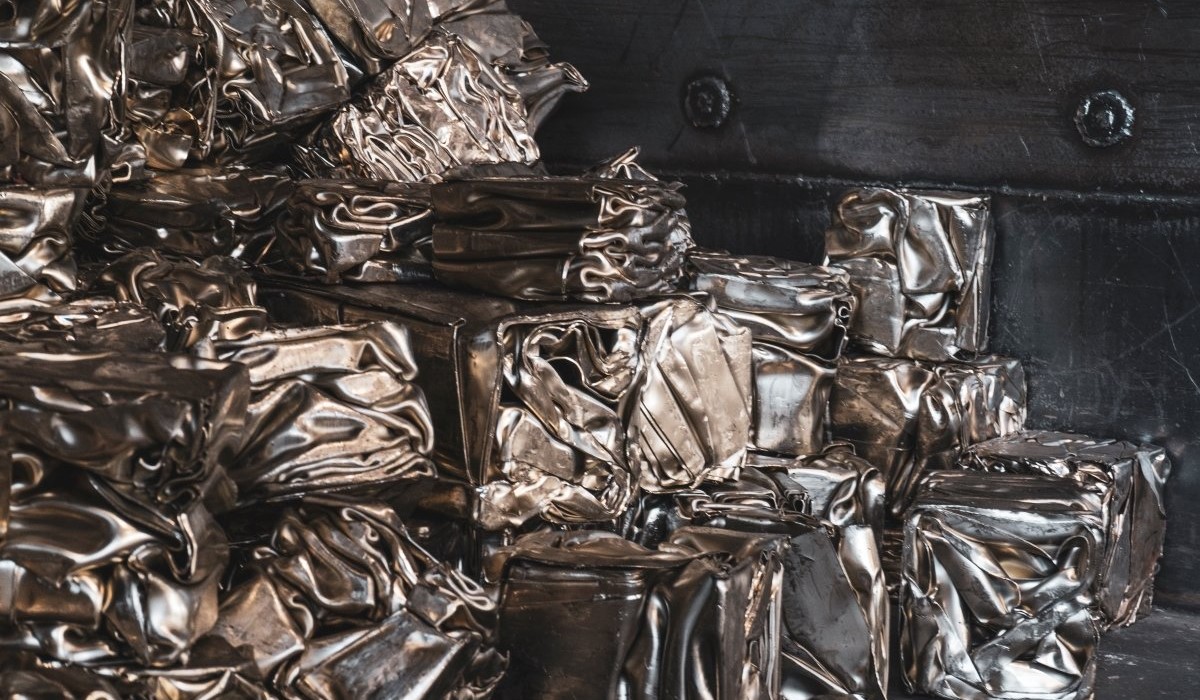
We have dealt many times with the long-lasting and new critical issues which are affecting each industry, but now we would like to focus on the metal market: what is the outlook for the companies like RMG, which use copper, aluminium, nickel, zinc and tin for their production? What is the current and the expected trend for the main non ferrous metals at the base of the production of bronze, aluminium bronze and special alloy ingots?
The 36th edition of the Circumstances Observatory “Scenari & Tendenze” (lit. Scenarios & Trends) organised by Confindustria Brescia provided the participants with important information concerning the general economic scenario and the metal industry as well.
The data concerning the main non ferrous metals at the base of our production of copper based alloys ingots were particularly interesting. We would like to summarise them for anyone working in our industry, since they could be a starting point for finding the answer to these nagging questions.
What is the forecast provided by Scenari & Tendenze concerning this topic?
Non ferrous metals and production of bronze and special brasses: current trend and projections
If we analyse the mean of all non ferrous metals quoted on LME, based on weekly averages (US$/MT), we observe an increase of +49% in 2020, followed in 2021 by another rise in prices of +52%. A slight correction can be seen in the last weeks, but we should consider it as temporary since in the first months of this year the stocks started falling, reaching a total loss of -31% in 2021. This trend shows the power of the demand for non ferrous metals, which cannot be satisfied by the supply due to its inability to fill up sufficiently the stocks.
As a result, it isn’t possible to hope for a decrease in prices.
Let’s see now the cycles and trends of main non ferrous metals we use to produce our bronzes and copper based alloys.
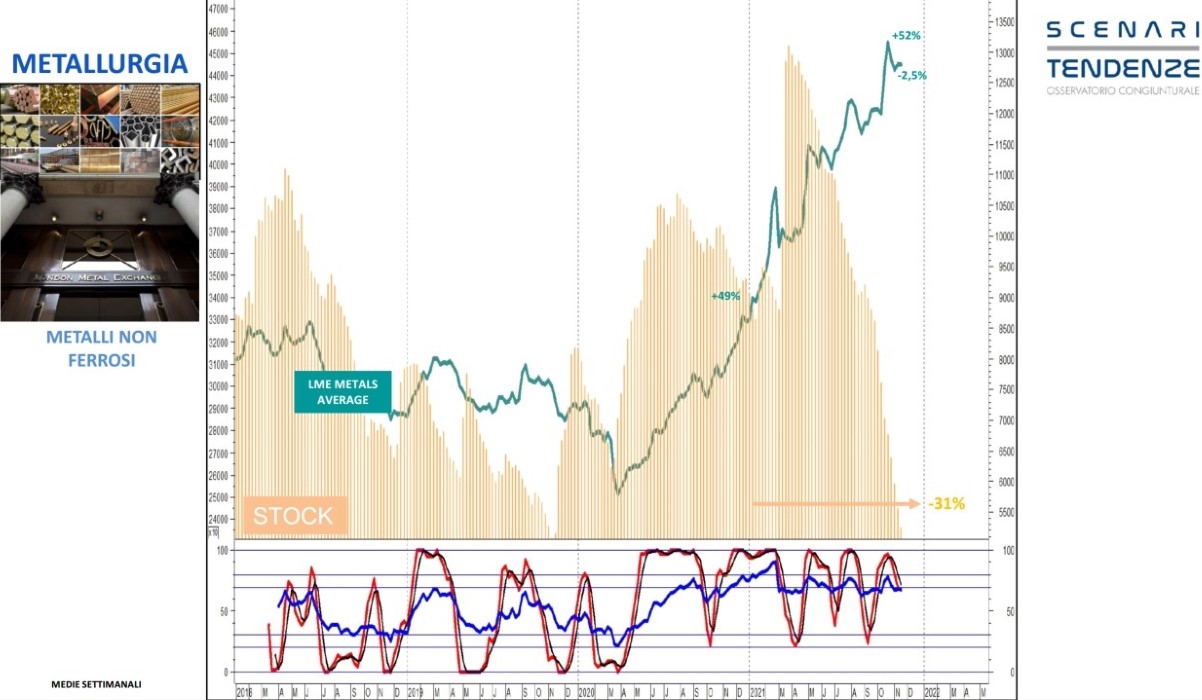
Trend of main non ferrous metals. Source: Scenari & Tendenze, Confindustria Brescia
Aluminium: weekly averages (US$/MT)
Looking at the graphics of aluminium, in 2020 it is possible to see a rise in price of +39%, followed by another +55% in 2021. This increasing trend has been followed by a correction (-16%), which is already over: we can observe an upward trend (+1.5%), especially since aluminium volumes have plummeted throughout the year (-29.3%).
The reason behind this price trend is mainly connected to the fact that the production of this metal requires a high quantity of energy, whose price has recently skyrocketed, thus causing stops of aluminium production. As a result, aluminium volumes have decreased and the prices have been targeted by speculation.
What is the forecast? Aluminium will take a strategic role in the energy transition and the demand for this metal will increase more and more in the automotive industry. Therefore, we might see brief corrections, but the increase in aluminium prices is quite sure. In 2022 the price is expected to be on high levels:
- First Quarter (Q1): 2,780 US$/MT;
- Second Quarter (Q2): 2,840 US$/MT.
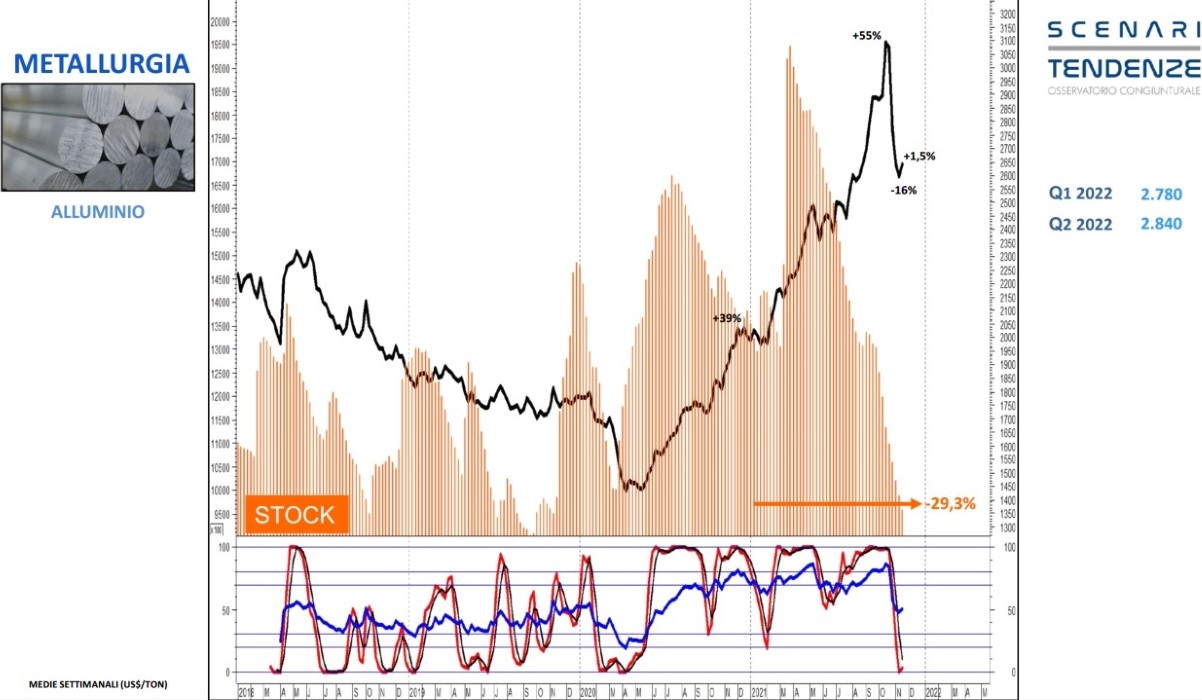
Trend of aluminium. Source: Scenari & Tendenze, Confindustria Brescia
Copper: weekly averages (US$/MT)
Let’s analyse now the information regarding the most important non ferrous metal for our company: copper. In 2020 copper was one of the first to undergo a rise in price, followed then by other non ferrous metals. Weekly averages show a jump of +64.5% and a subsequent further +34%. This increasing trend was followed by a correction at the beginning of 2021 (-13%), which now, after an upward trend of +12.5%, is decreasing slightly (-6%). This correction should be read as an adjustment. The stock situation is consistent with what has been said above. A decrease in volumes, even though it was lower this year, could be observed in 2021 (-14%).
We should be aware that also the demand for copper will increase due to the energy transition since this metal is an excellent electric conductor. In this scenario the present supply wouldn’t be able to meet satisfactorily both the current and the expected demand, but this critical situation could be relieved by the opening of new mines.
In 2022 copper price is expected to follow the adjustment trend cited above. Price should settle on current levels first and from the second quarter of 2022 it should rise again:
- First Quarter (Q1): 9,400 US$/MT
- Second Quarter (Q2): 9,750 US$/MT
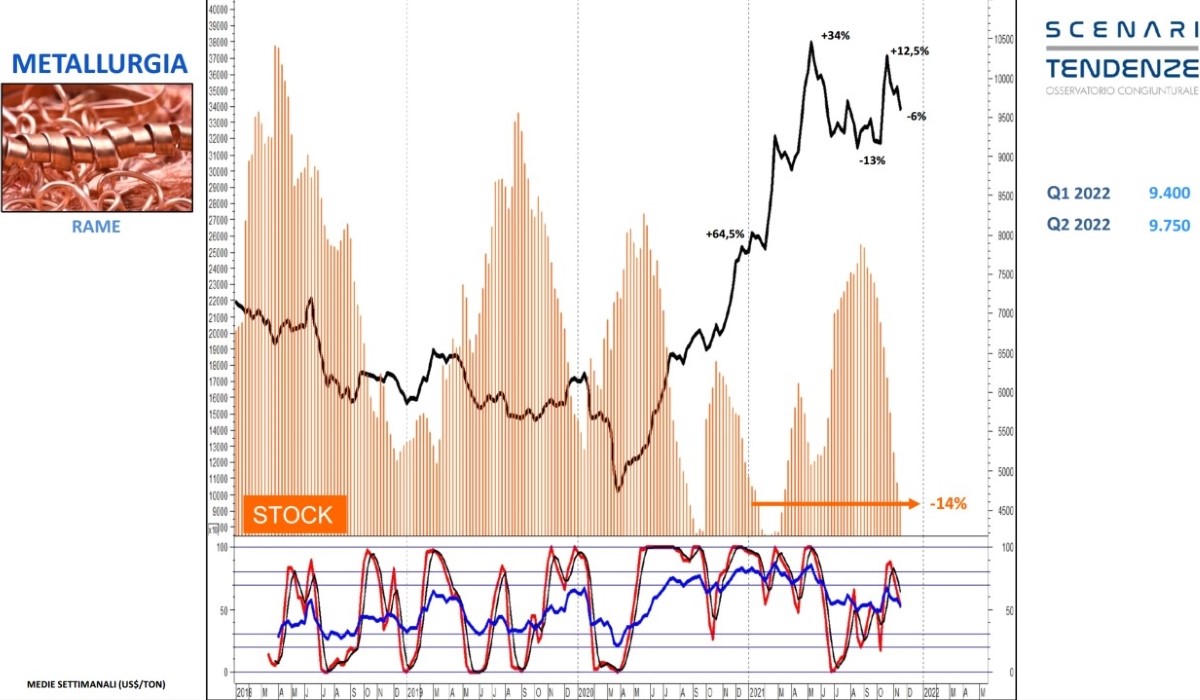
Trend of copper. Source: Scenari & Tendenze, Confindustria Brescia
Nickel: weekly averages (US$/MT)
Considering the price on weekly averages, we can observe an increase of +50.5% which began in March 2020 and ran out a year later with a correction, followed by a new rise in price of +21%. Now nickel price is decreasing once again, but this trend should be considered as temporary (-3%). With regards to nickel stocks, after a first upward phase, volumes have plummeted since the beginning of 2021 (-49%). A fall in volumes which supports the increasing trend of this metal.
According to projections, nickel will be the main metal not only for the stainless steel market, but also for the production of new generation batteries for electric cars. This emerging demand connected to the energy transition, together with the current demand, might cause a gap between demand and supply, thus keeping the price at high levels.
Nickel price might exceed the price level of 21,000 US$/MT in the first two quarters of 2022:
- First quarter (Q1): 21,100 US$/MT;
- Second quarter (Q2): 21,600 US$/MT
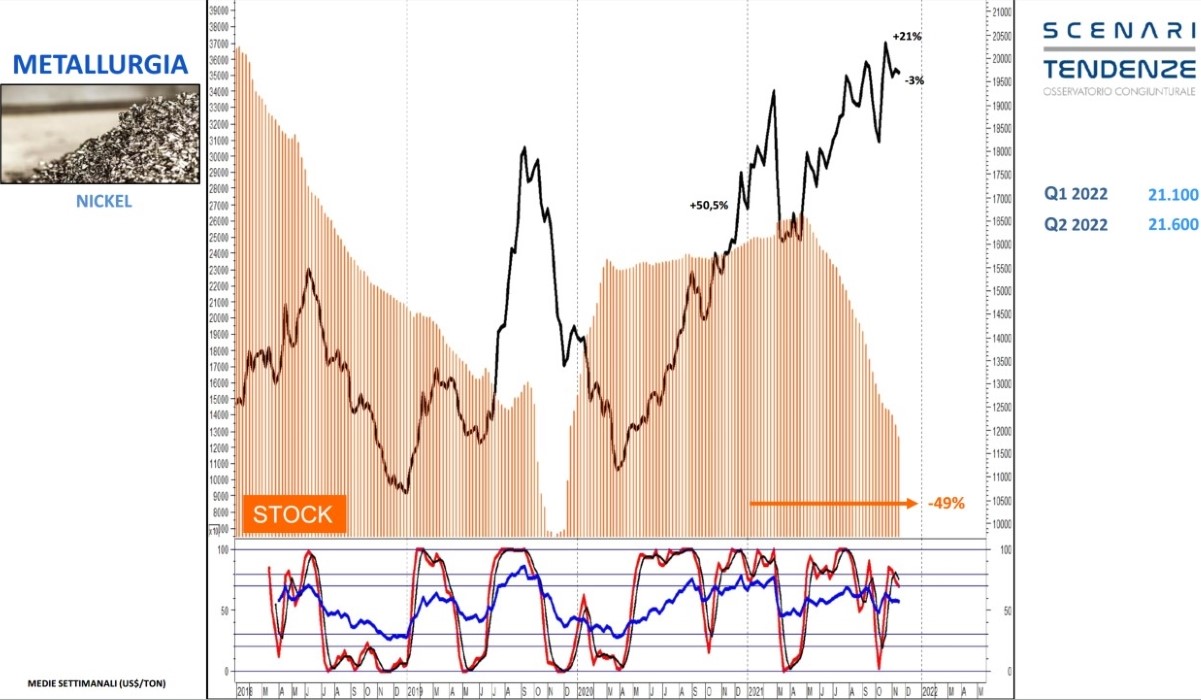
Trend of nickel. Source: Scenari & Tendenze, Confindustria Brescia
Zinc: weekly averages (US$/MT)
Looking at weekly averages, an increase in prices of +50.5% can be observed in 2020, followed then by a further jump of +32.5% and a subsequent correction of -11%. With regards to stocks, the scenario is similar to that of the other non ferrous metals. We can see a rapid fall in volumes, which started at the beginning of 2021 (-11%), but we should bear in mind that the availability for resources is facilitating the situation of zinc.
Forecast for 2022? Should a further slight decrease occur as expected, zinc price should settle on the following monthly averages:
- First Quarter (Q1): 3,100 US$/MT;
- Second Quarter (Q2): 3,300 US$/MT.
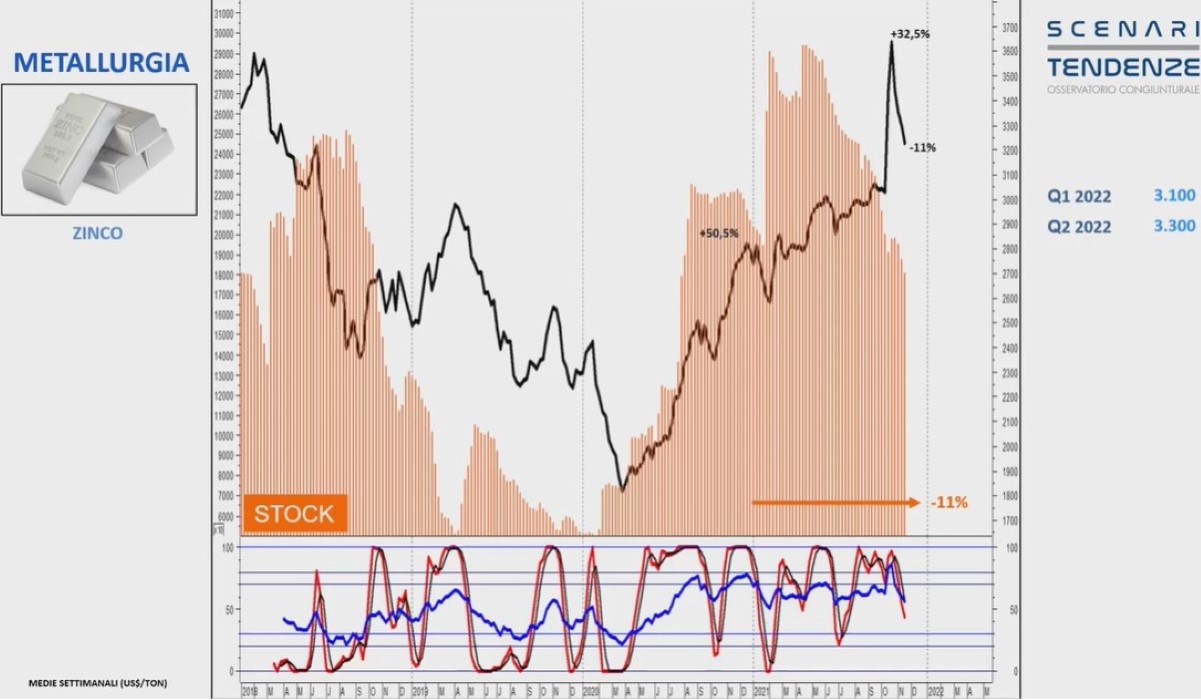
Trend of zinc. Source: Scenari & Tendenze, Confindustria Brescia
Tin: weekly averages (US$/MT)
Looking at the graphics of tin, it is clear that it is the non ferrous metal with the most incredible increase in price. Tin began his rapid escalation in 2020 with an increase of +47.5%, then reaching an increase of +91% in November 2021.
The reasons behind this trend? Few companies produce tin and the situation of stocks is delicate. Suffice it to say that volumes were already in short supply at the beginning of 2021 and they have faced a subsequent further reduction of -56%.
The price of tin is expected to exceed an average of 40,000 US$/MT. Contributing factor to this projection is also the strategic role of zinc in the electronics industry:
- First quarter (Q1): 40,100 US$/MT;
- Second quarter (Q2): 41,000 US$/MT.
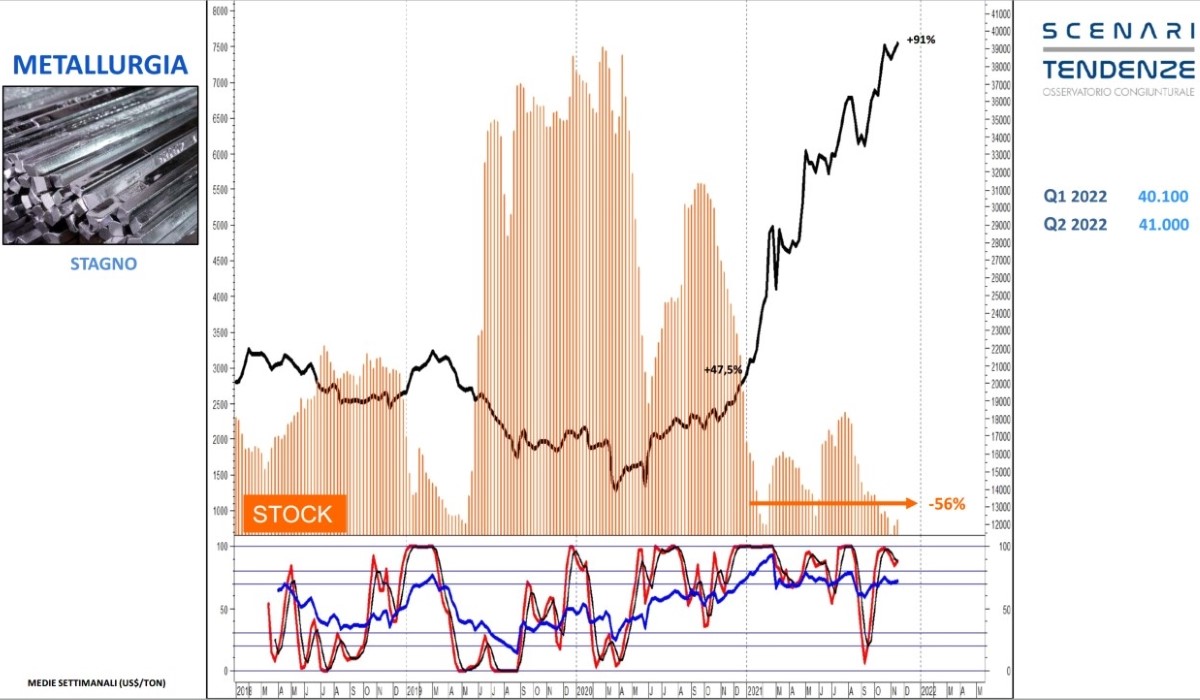
Trend of tin. Source: Scenari & Tendenze, Confindustria Brescia
Source: Confindustria Brescia - "Scenari & Tendenze", 25th November 2021.